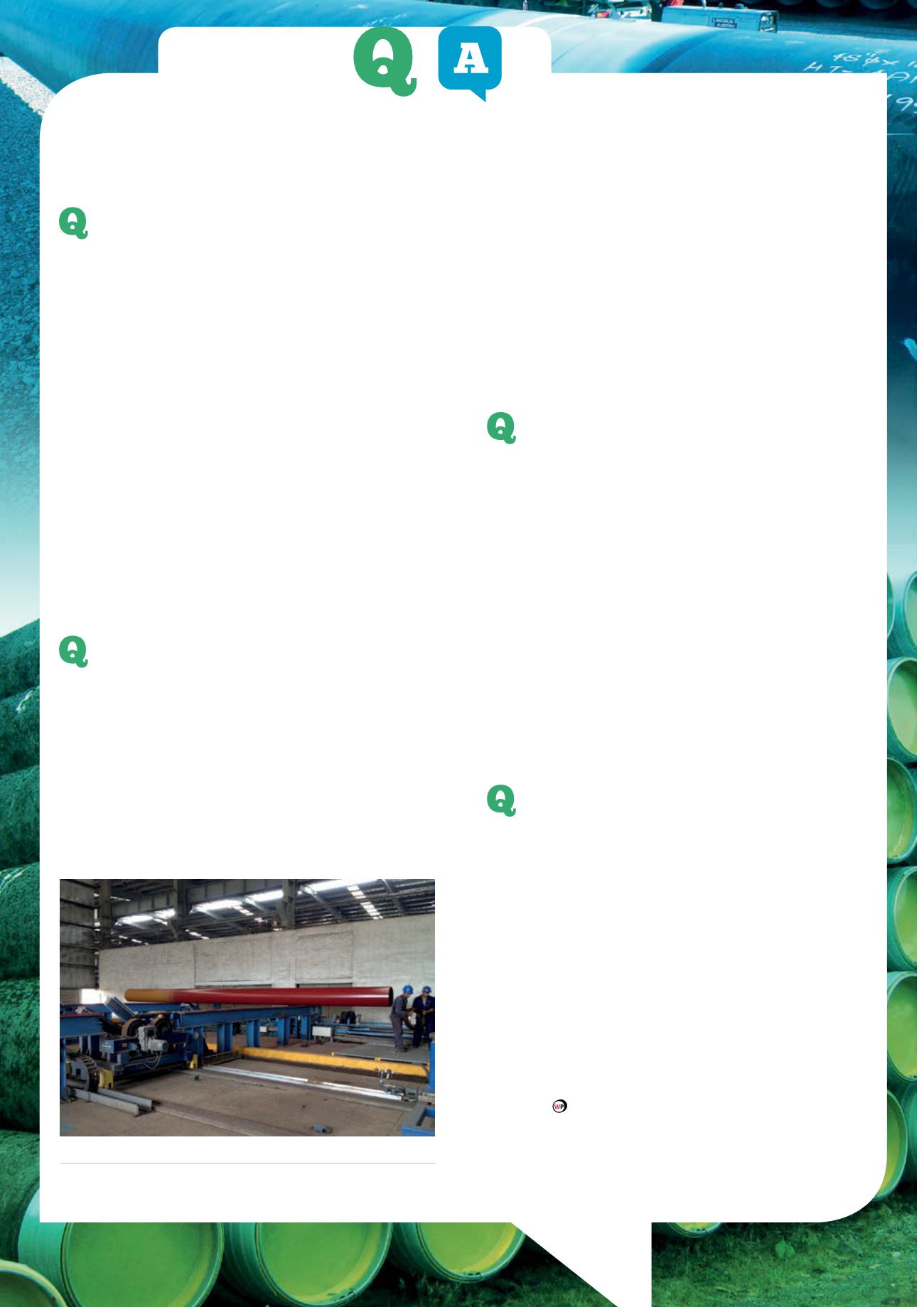
Coatings
&
Bill Sante, Axalta Coating
Systems, USA
The biggest threat to the integrity of
pipeline coatings (in the plant and/or in the
field)
Axalta Coating Systems has 150 years of experience in coatings,
a third of which as an active player in the pipe coating market,
so is familiar with the threats to the integrity of pipeline
coatings. There are a few of them, and some are more common
than others. First, damage to the coating during installation
(handling, dragging or bumping) or operation of the pipe tends
to yield the largest issues.
However, there are a few coating technologies and other
alternatives on the market to help offset this type of damage.
For instance, Axalta offers abrasion resistant overcoat (ARO)
solutions or numerous combinations of dual layer options,
which are specifically designed to offer increased protection.
Additionally, pipe coatings utilised in improper operating
conditions can result in issues such as hot spots, leaks, etc.
Another threat to the integrity of pipeline coatings is the poor
or inadequate application of the coating, whether it is in the
field or a controlled environment. And finally, a weak shielding
mechanism, or no cathodic shielding mechanism at all, can lead
to accelerated corrosion in some cases.
Coatings for high pressure, high
temperature pipelines
Coatings for high pressure/high temperature pipelines are
requests that coating manufacturers are hearing more about,
and are generally taking quick action in order to address
customers’ needs. Axalta Coating Systems is no exception.
The pipeline market is asking for both external and internal
coatings that can resist higher temperatures. The rise in
standards is due to the industry being forced to drill deeper
shafts, which require directional drilling in order to reach
the wells. The location of these wells are in more rigorous
environments, with temperatures reaching
>
150˚C and pressure
levels of 10 000 psi. The Nap-Gard portfolio from Axalta
currently offers external coating systems that have been used
on pipelines operating at 150˚C and up to 180˚C. The most
challenging part of developing high-temperature coatings
is getting agreement from the industry on defining what an
external coating needs in order to pass and be considered ‘a
qualified coating’ for higher operating temperatures. Axalta
will be releasing a new internal high temperature coating in the
latter part of 2016 to meet the needs of higher temperature
resistance.
Which convention, conference, standards
and guidance are of most relevance to the
pipeline coatings industry?
Axalta Coating Systems continues to have a global presence
at NACE International, AMI organised pipeline and field joint
coating conferences, which bring together many talented
professionals to discuss issues and solutions within the industry.
On a regional level, events such the NAPCA and NACE have
been very beneficial for networking and learning from suppliers
and customers in North America.
In all regions of the world, the industry specifies the
pipe coating standards as defined by the Canada Standards
Association (CSA) and ASTM International. These two
organisations define the majority of the standards and testing
methods, and as such we of course work to meet them. For
example, Axalta’s Nap-Gard portfolio adheres to the industry
standards for impact resistance, bending, elongation, hardness
and cathodic disbondment, as defined by CSA and ASTM
International.
Biggest challenge to the pipeline coatings
industry in 2016
The challenges the pipeline industry in 2016 will face will
most certainly revolve around the soft demand for pipeline
construction, which is directly impacted by falling crude oil
pricing. Additionally, cost pressure by end-users and pipeline
owners will cascade through the value chain to ensure that all
suppliers remain price competitive.
From a technology standpoint, the challenges will be
the continuing need for high-temperature and pressure-
resistant coatings in new pipeline construction. These elevated
temperature and pressure scenarios are evident in every region
of the globe where the industry continues to drill further
horizontally and deeper into the ground to reach the wells and
shale deposits. Axalta is addressing these needs by developing
internal and external coatings, which will have capabilities of
withstanding temperatures in excess of 200˚C and pressure of
10 000 psi.
Note
Bill Sante, Global Director, Functional Coatings for Axalta Coating Systems.
Figure 1.
Axalta double layer FBE coating.
52


